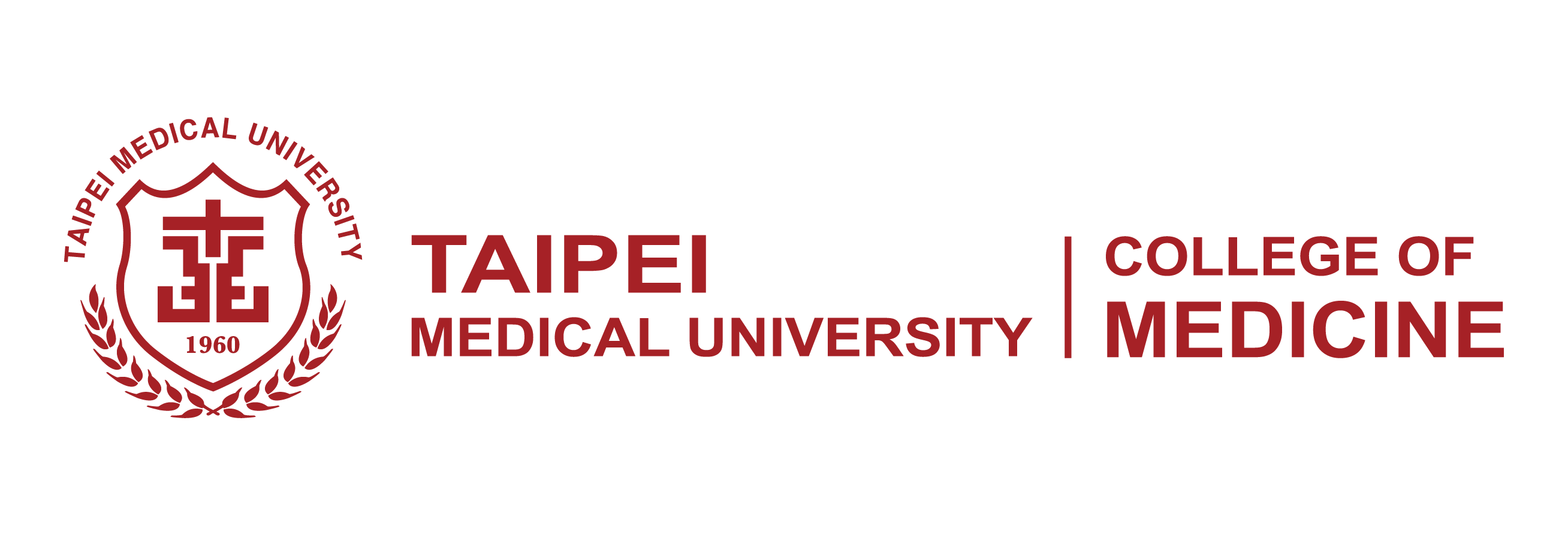Research | Departments
Research
Departments
Research | Departments
Research
Departments
Our research is dedicated to unraveling the intricate mechanisms of cardiac fibrogenesis and the pathophysiology of heart failure. We focus on critical aspects, including epigenetic regulation, cardiac metabolism, and mitochondrial function. By adopting a comprehensive approach, we aim to contribute insights that extend beyond cardiac research, advancing our understanding of broader medical challenges.
Our investigations bridge the gap between molecular mechanisms, calcium signaling, and fibroblast behavior in heart failure and fibrogenesis. These findings hold promise for future therapeutic strategies in cardiovascular medicine and may provide valuable insights for developing targeted therapies in heart failure management.

Email | yuhsunkao@tmu.edu.tw
Profile | Academic Hub/Pure Experts
Associate Professor (Ph.D.)
Epigenetic regulation in cardiac pathophysiology
Laboratory of Heart Failure, Cardiac Metabolism and Fibrogenesis
Yu-Hsun Kao received her Ph.D. in the Graduate Institute of Life Sciences, National Defense Medical Center in 2008. She has been a postdoctoral fellow for four years at Taipei Medical University (TMU). In 2013, she was employed as an Assistant Professor at TMU. Dr. Kao is an Associate Professor at the Graduate Institute of Clinical Medicine, College of Medicine, TMU in 2016. Her research topics include cellular metabolism, calcium homeostasis, and epigenetic regulation in cardiac pathophysiology.
–
–
Yu-Hsun Kao received her Ph.D. in the Graduate Institute of Life Sciences, National Defense Medical Center in 2008. She has been a postdoctoral fellow for four years at Taipei Medical University (TMU). In 2013, she was employed as an Assistant Professor at TMU. Dr. Kao is an Associate Professor at the Graduate Institute of Clinical Medicine, College of Medicine, TMU in 2016. Her research topics include cellular metabolism, calcium homeostasis, and epigenetic regulation in cardiac pathophysiology.
–
(Associate Professor)
(Ph.D student)
(Ph.D student)
(Ph.D student)
Huynh TV, Rethi L, Lee TW, Higa S, Kao YH*, Chen YJ.
Spike Protein Impairs Mitochondrial Function in Human Cardiomyocytes: Mechanisms Underlying Cardiac Injury in COVID-19. Cells.
2023 Mar 11;12(6):877.
Abstract
Background: COVID-19 has a major impact on cardiovascular diseases and may lead to myocarditis or cardiac failure. The clove-like spike (S) protein of SARS-CoV-2 facilitates its transmission and pathogenesis. Cardiac mitochondria produce energy for key heart functions. We hypothesized that S1 would directly impair the functions of cardiomyocyte mitochondria, thus causing cardiac dysfunction. Methods: Through the Seahorse Mito Stress Test and real-time ATP rate assays, we explored the mitochondrial bioenergetics in human cardiomyocytes (AC16). The cells were treated without (control) or with S1 (1 nM) for 24, 48, and 72 h and we observed the mitochondrial morphology using transmission electron microscopy and confocal fluorescence microscopy. Western blotting, XRhod-1, and MitoSOX Red staining were performed to evaluate the expression of proteins related to energetic metabolism and relevant signaling cascades, mitochondrial Ca2+ levels, and ROS production. Results: The 24 h S1 treatment increased ATP production and mitochondrial respiration by increasing the expression of fatty-acid-transporting regulators and inducing more negative mitochondrial membrane potential (Δψm). The 72 h S1 treatment decreased mitochondrial respiration rates and Δψm, but increased levels of reactive oxygen species (ROS), mCa2+, and intracellular Ca2+. Electron microscopy revealed increased mitochondrial fragmentation/fission in AC16 cells treated for 72 h. The effects of S1 on ATP production were completely blocked by neutralizing ACE2 but not CD147 antibodies, and were partly attenuated by Mitotempo (1 µM). Conclusion: S1 might impair mitochondrial function in human cardiomyocytes by altering Δψm, mCa2+ overload, ROS accumulation, and mitochondrial dynamics via ACE2.
Kao YH, Chung CC, Cheng WL, Lkhagva B, Chen YJ.
Pitx2c inhibition increases atrial fibroblast activity: Implications in atrial arrhythmogenesis.
Eur J Clin Invest. 2019 Oct;49(10):e13160.
Abstract
Background: A Pitx2c deficiency increases the risk of atrial fibrillation (AF). Atrial structural remodelling with fibrosis blocks electrical conduction and leads to arrhythmogenesis. A Pitx2c deficiency enhances profibrotic transforming growth factor (TGF)-β expression and calcium dysregulation, suggesting that Pitx2c may play a role in atrial fibrosis. The purposes of this study were to evaluate whether a Pitx2c deficiency modulates cardiac fibroblast activity and study the underlying mechanisms. Materials and Methods: A migration assay, proliferation analysis, Western blot analysis and calcium fluorescence imaging were conducted in Pitx2c-knockdown human atrial fibroblasts (HAFs) using short hairpin (sh)RNA or small interfering (si)RNA. Results: Compared to control HAFs, Pitx2c-knockdown HAFs had a greater migration but a similar proliferative ability. Pitx2c-knockdown HAFs had a higher calcium influx with enhanced phosphorylation of calmodulin kinase II (CaMKII), α-smooth muscle actin and matrix metalloproteinase-2. In the presence of a CaMKII inhibitor (KN-93, 0.5 μmol/L), control and Pitx2c-knockdown HAFs exhibited similar migratory abilities. Conclusion: These findings suggest that downregulation of Pitx2c may regulate atrial fibrosis through modulating calcium homeostasis, which may contribute to its role in anti-atrial fibrosis, and Pitx2c downregulation may change the atrial electrophysiology and AF occurrence through modulating fibroblast activity.
Lee TW, Lee TI, Lin YK, Kao YH*, Chen YJ*.
Calcitriol downregulates fibroblast growth factor receptor 1 through histone deacetylase activation in HL-1 atrial myocytes.
J Biomed Sci. 2018 May 18;25(1):42
Abstract
Background: Fibroblast growth factor (FGF)-2 plays a crucial role in the pathophysiology of cardiovascular diseases (CVDs). FGF-2 was reported to induce cardiac hypertrophy through activation of FGF receptor 1 (FGFR1). Multiple laboratory findings indicate that calcitriol may be a potential treatment for CVDs. In this study, we attempted to investigate whether calcitriol regulates FGFR1 expression to modulate the effects of FGF-2 signaling in cardiac myocytes and explored the potential regulatory mechanism. Methods: Western blot, polymerase chain reaction, small interfering RNA, fluorometric activity assay, and chromatin immunoprecipitation (ChIP) analyses were used to evaluate FGFR1, FGFR2, FGFR3, FGFR4, phosphorylated extracellular signal-regulated kinase (p-ERK), β-myosin heavy chain (β-MHC), phosphorylated phospholipase Cγ (p-PLCγ), nuclear factor of activated T cells (NFAT), and histone deacetylase (HDAC) expressions and enzyme activities in HL-1 atrial myocytes without and with calcitriol (1 and 10 nM) treatment, in the absence and presence of FGF-2 (25 ng/mL) or suberanilohydroxamic acid (SAHA, a pan-HDAC inhibitor, 1 μM). Results: We found that calcitriol-treated HL-1 cells had significantly reduced FGFR1 expression compared to control cells. In contrast, expressions of FGFR2, FGFR3, and FGFR4 were similar between calcitriol-treated and control HL-1 cells. FGF-2-treated HL-1 cells had similar PLCγ phosphorylation and nuclear/cytoplasmic NFAT expressions compared to control cells. FGF-2 induced lower expressions of p-ERK and β-MHC in calcitriol-treated HL-1 cells than in control cells. FGFR1-knockdown blocked FGF-2 signaling and reversed the protective effects of calcitriol. Compared to control cells, calcitriol-treated HL-1 cells had higher nuclear HDAC activity. The ChIP analysis demonstrated a significant decrease in acetyl-histone H4, which is associated with an increase in HDAC3 in the FGFR1 promoter. Calcitriol-mediated FGFR1 downregulation was attenuated in the presence of SAHA. Conclusions: Calcitriol diminished FGFR1 expression through HDAC activation, which ameliorated the harmful effects of FGF-2 on cardiac myocytes.
Lee TW, Bai KJ, Lee TI, Chao TF, Kao YH*, Chen YJ.
PPARs modulate cardiac metabolism and mitochondrial function in diabetes.
J Biomed Sci. 2017 Jan 10;24(1):5.
Abstract
Diabetic cardiomyopathy is a major complication of diabetes mellitus (DM). Currently, effective treatments for diabetic cardiomyopathy are limited. The pathophysiology of diabetic cardiomyopathy is complex, whereas mitochondrial dysfunction plays a vital role in the genesis of diabetic cardiomyopathy. Metabolic regulation targeting mitochondrial dysfunction is expected to be a reasonable strategy for treating diabetic cardiomyopathy. Peroxisome proliferator-activated receptors (PPARs) are master executors in regulating glucose and lipid homeostasis and also modulate mitochondrial function. However, synthetic PPAR agonists used for treating hyperlipidemia and DM have shown controversial effects on cardiovascular regulation. This article reviews our updated understanding of the beneficial and detrimental effects of PPARs on mitochondria in diabetic hearts.
Kao YH, Chen YC, Cheng CC, Lee TI, Chen YJ, Chen SA.
Tumor necrosis factor-alpha decreases sarcoplasmic reticulum Ca2+-ATPase expressions via the promoter methylation in cardiomyocytes.
Crit Care Med. 2010 Jan;38(1):217-22.
Abstract
OBJECTIVES: Sarcoplasmic reticulum Ca-ATPases (SERCA2a) plays an essential role in the Ca homeostasis and cardiac functions. Tumor necrosis factor-α (TNF-α) decreases the SERCA2a, which may underlie cardiac dysfunction during sepsis and heart failure. Because the promoter region of SERCA2a contains CpG islands, gene methylation should be critical in regulating SERCA2a. The present study was to evaluate whether TNF-α can modulate SERCA2a via enhancing methylation and to investigate the underlying mechanisms. DESIGN: Controlled laboratory experiment. SETTING: University research laboratory. SUBJECTS: HL-1 cardiomyocytes. INTERVENTIONS: TNF-α (1-50 ng/mL) was administered in HL-1 cardiomyocytes with and without co-administration of an NF-κB inhibitor (SN-50, 50 μg/mL), antioxidant agents (ascorbic acid, 100 μM, or coenzyme Q10, 10 μM), or methylation inhibitor (5-aza-2′-deoxycytidine, 0.1, 1 μM). MEASUREMENTS AND MAIN RESULTS: TNF-α (50 ng/mL) decreased the SERCA2a RNA and protein by quantitative polymerase chain reaction and immunoblot. Furthermore, TNF-α (50 ng/mL) increased the methylation in the SERCA2a promoter region, which was not influenced by the co-administration of SN-50, ascorbic acid, or coenzyme Q10, but was attenuated by 5-aza-2′-deoxycytidine (0.1 μM). Additionally, TNF-α (50 ng/mL) increased the expression of DNA methyltransferase 1. CONCLUSIONS: TNF-α increased DNA methyltransferase levels, thus enhancing the methylation in the SERCA2a promoter region with a result of reducing SERCA2a. These findings suggest that inhibition of hypermethylation may be a novel treatment strategy for cardiac dysfunction.







 Total Users : 300241
Total Users : 300241
 Chun-Jen Huang
Chun-Jen Huang 